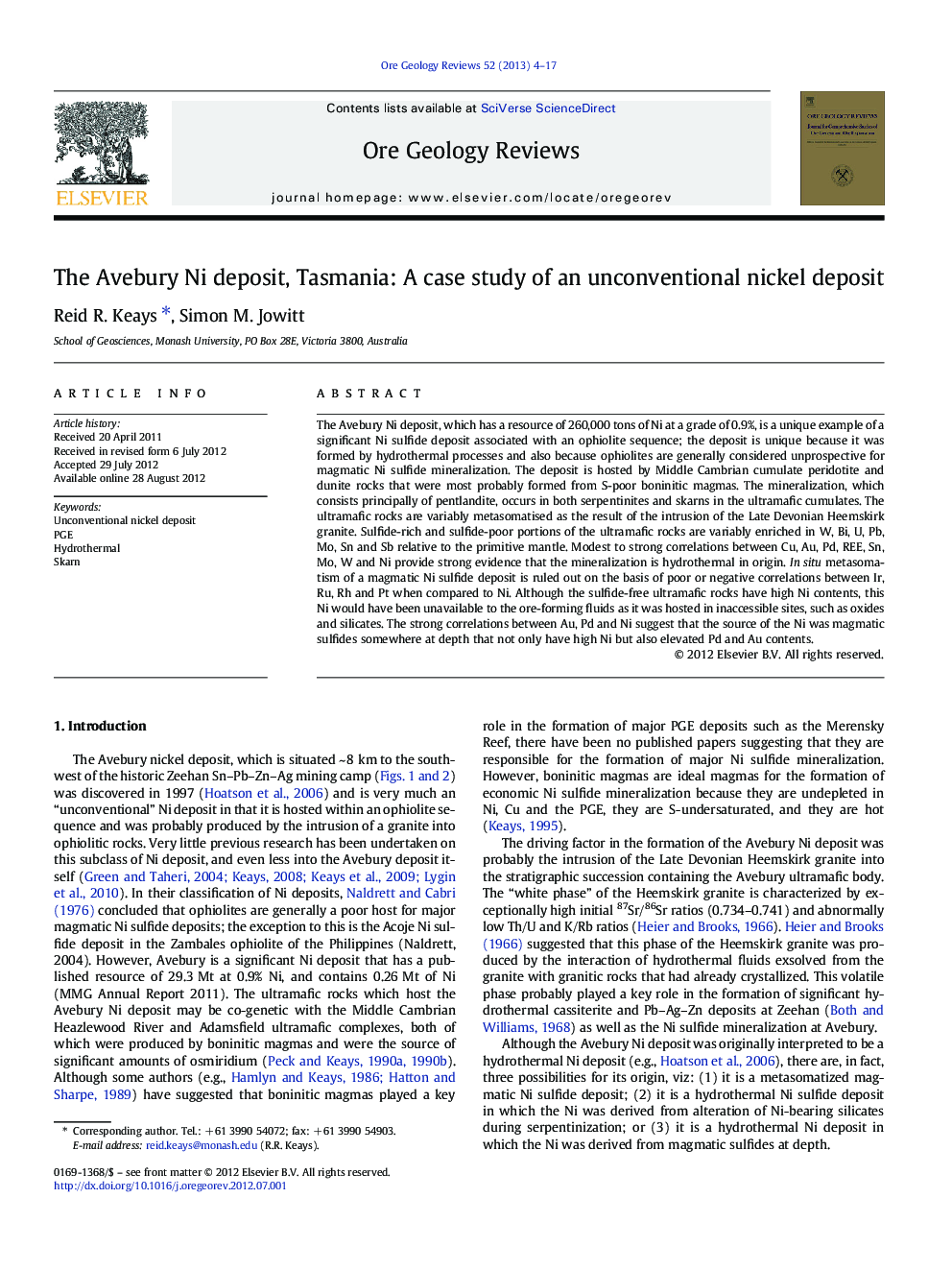| کد مقاله | کد نشریه | سال انتشار | مقاله انگلیسی | نسخه تمام متن |
|---|---|---|---|---|
| 4697591 | 1637251 | 2013 | 14 صفحه PDF | دانلود رایگان |

The Avebury Ni deposit, which has a resource of 260,000 tons of Ni at a grade of 0.9%, is a unique example of a significant Ni sulfide deposit associated with an ophiolite sequence; the deposit is unique because it was formed by hydrothermal processes and also because ophiolites are generally considered unprospective for magmatic Ni sulfide mineralization. The deposit is hosted by Middle Cambrian cumulate peridotite and dunite rocks that were most probably formed from S-poor boninitic magmas. The mineralization, which consists principally of pentlandite, occurs in both serpentinites and skarns in the ultramafic cumulates. The ultramafic rocks are variably metasomatised as the result of the intrusion of the Late Devonian Heemskirk granite. Sulfide-rich and sulfide-poor portions of the ultramafic rocks are variably enriched in W, Bi, U, Pb, Mo, Sn and Sb relative to the primitive mantle. Modest to strong correlations between Cu, Au, Pd, REE, Sn, Mo, W and Ni provide strong evidence that the mineralization is hydrothermal in origin. In situ metasomatism of a magmatic Ni sulfide deposit is ruled out on the basis of poor or negative correlations between Ir, Ru, Rh and Pt when compared to Ni. Although the sulfide-free ultramafic rocks have high Ni contents, this Ni would have been unavailable to the ore-forming fluids as it was hosted in inaccessible sites, such as oxides and silicates. The strong correlations between Au, Pd and Ni suggest that the source of the Ni was magmatic sulfides somewhere at depth that not only have high Ni but also elevated Pd and Au contents.
► Avebury is a major new style of Ni sulfide mineralization.
► Hosted within an ophiolite sequence.
► Mineralization produced by the intrusion of a granite into ultramafics.
► Ni originally sourced from magmatic sulfides external to ultramafics, not silicates.
► Mobilization of Ni was by fluids derived from Heemskirk granite.
Journal: Ore Geology Reviews - Volume 52, August 2013, Pages 4–17